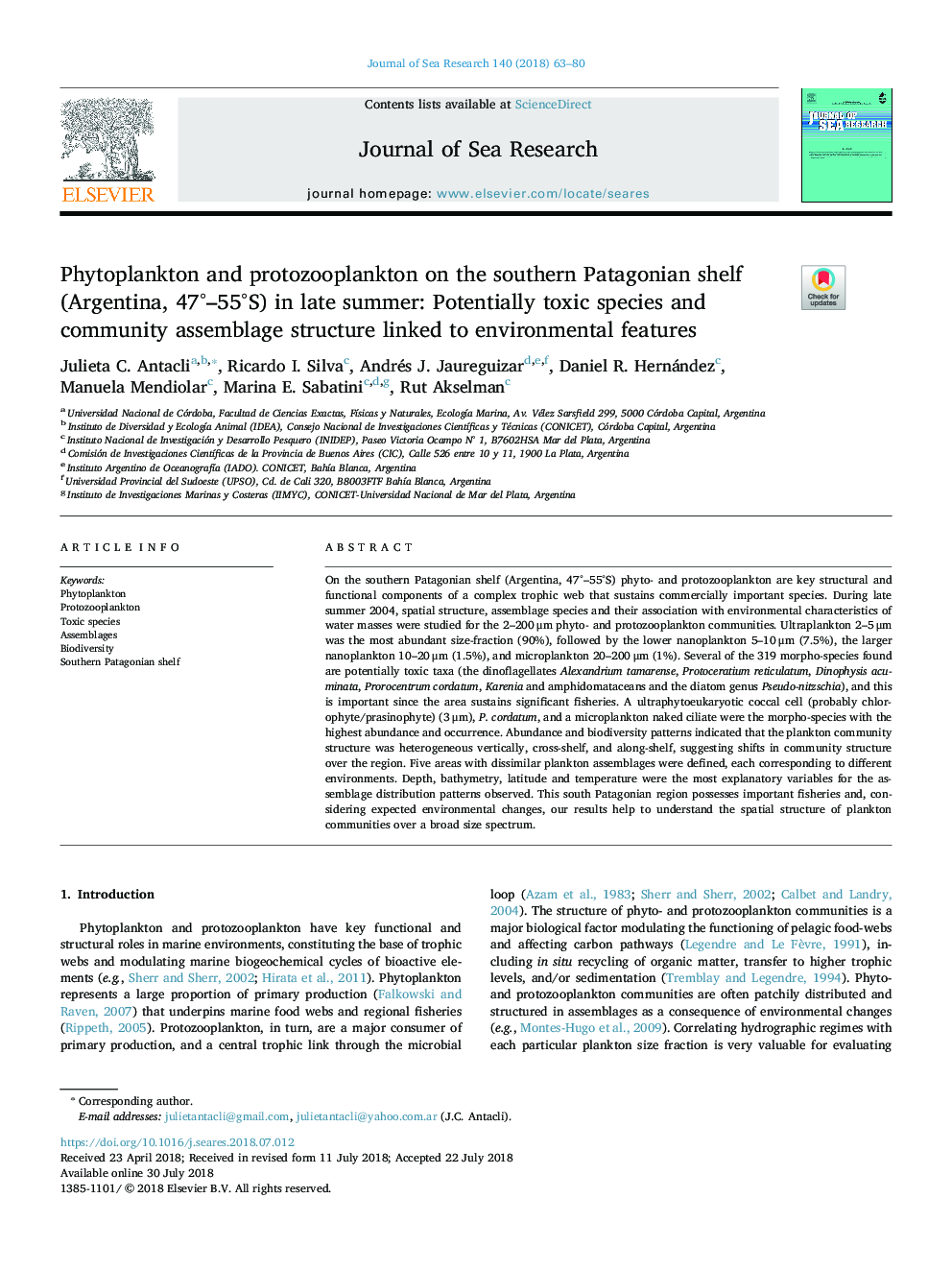| Article ID | Journal | Published Year | Pages | File Type |
|---|---|---|---|---|
| 8886089 | Journal of Sea Research | 2018 | 18 Pages |
Abstract
On the southern Patagonian shelf (Argentina, 47°-55°S) phyto- and protozooplankton are key structural and functional components of a complex trophic web that sustains commercially important species. During late summer 2004, spatial structure, assemblage species and their association with environmental characteristics of water masses were studied for the 2-200â¯Î¼m phyto- and protozooplankton communities. Ultraplankton 2-5â¯Î¼m was the most abundant size-fraction (90%), followed by the lower nanoplankton 5-10â¯Î¼m (7.5%), the larger nanoplankton 10-20â¯Î¼m (1.5%), and microplankton 20-200â¯Î¼m (1%). Several of the 319 morpho-species found are potentially toxic taxa (the dinoflagellates Alexandrium tamarense, Protoceratium reticulatum, Dinophysis acuminata, Prorocentrum cordatum, Karenia and amphidomataceans and the diatom genus Pseudo-nitzschia), and this is important since the area sustains significant fisheries. A ultraphytoeukaryotic coccal cell (probably chlorophyte/prasinophyte) (3â¯Î¼m), P. cordatum, and a microplankton naked ciliate were the morpho-species with the highest abundance and occurrence. Abundance and biodiversity patterns indicated that the plankton community structure was heterogeneous vertically, cross-shelf, and along-shelf, suggesting shifts in community structure over the region. Five areas with dissimilar plankton assemblages were defined, each corresponding to different environments. Depth, bathymetry, latitude and temperature were the most explanatory variables for the assemblage distribution patterns observed. This south Patagonian region possesses important fisheries and, considering expected environmental changes, our results help to understand the spatial structure of plankton communities over a broad size spectrum.
Related Topics
Physical Sciences and Engineering
Earth and Planetary Sciences
Oceanography
Authors
Julieta C. Antacli, Ricardo I. Silva, Andrés J. Jaureguizar, Daniel R. Hernández, Manuela Mendiolar, Marina E. Sabatini, Rut Akselman,
